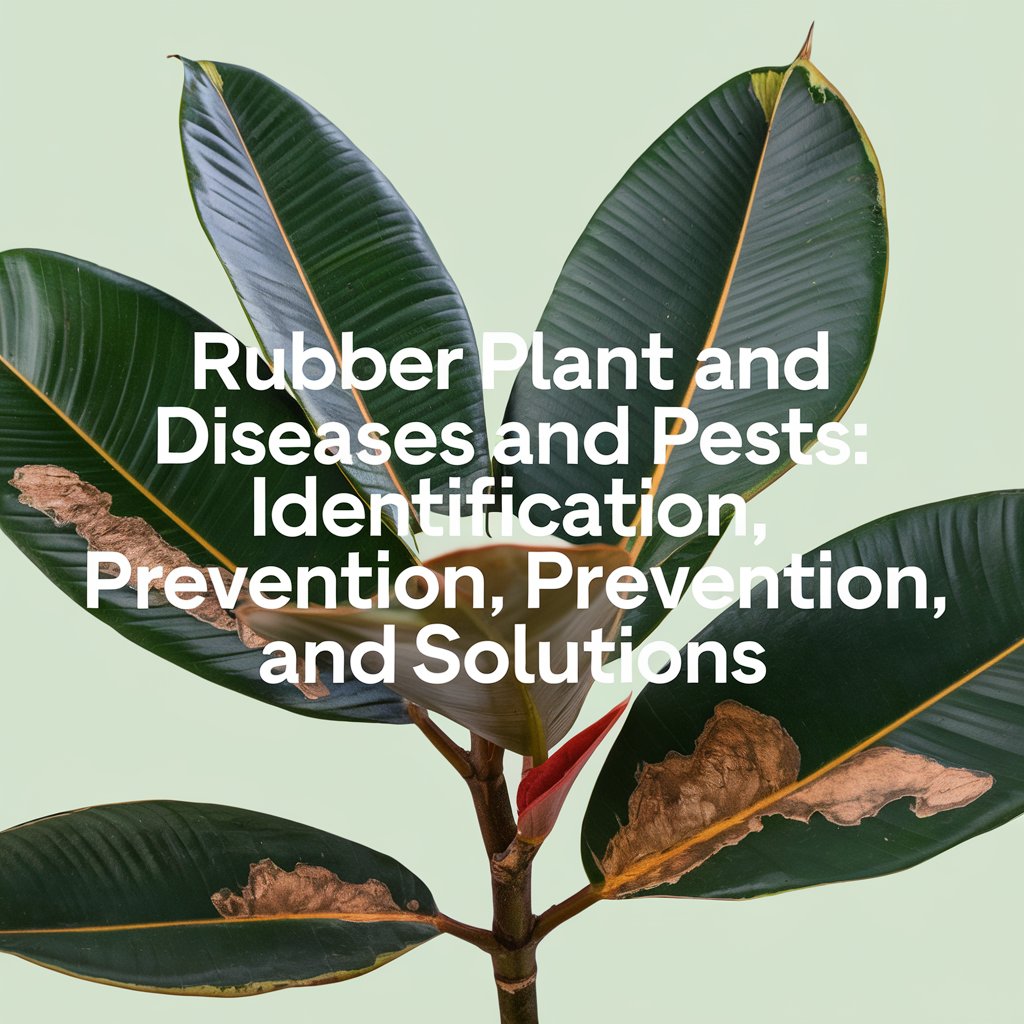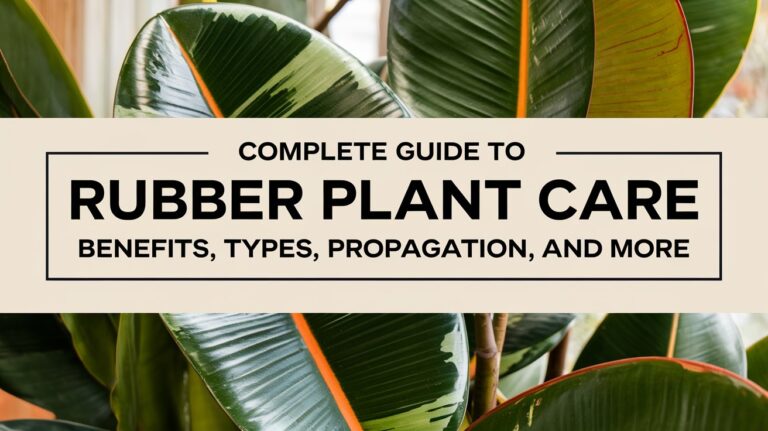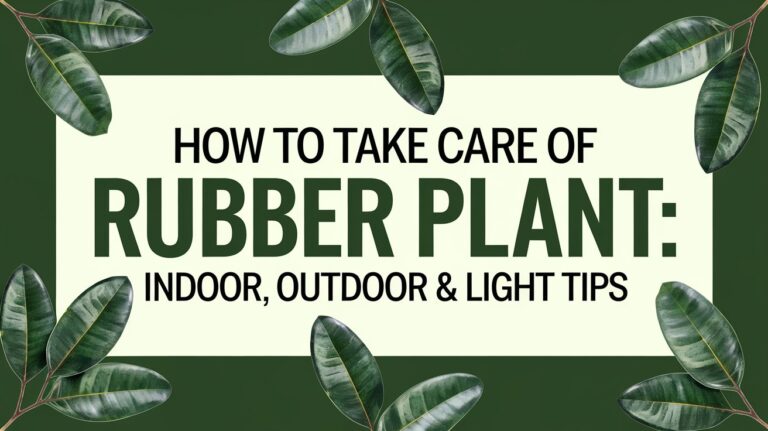Rubber plants (Ficus elastica) are some of the most resilient houseplants, but even these beauties aren’t immune to challenges. If you’ve ever dealt with yellowing leaves, mysterious spots, or sticky residues on your rubber plant, chances are you’ve encountered one of the many rubber plant diseases or pests of rubber plant. In this blog, I’ll walk you through my personal experience with these issues, how to identify them, and the best ways to prevent and solve them.
Common Diseases in Rubber Plants
Over the years, I’ve noticed that rubber tree plant diseases often start small—like a slight discoloration on the leaves—but can escalate quickly if ignored. Here are some of the most common diseases I’ve come across and how to handle them:
1. Fungal Infections
- Root Rot:
This was one of my first encounters with plant trouble. I overwatered my rubber plant, leading to yellowing leaves and mushy roots. Root rot, caused by poor drainage and excessive moisture, is a silent killer.- Prevention: Use well-draining soil and let the top inch dry before watering.
- Treatment: Repot your plant, trimming off any rotten roots.
- Leaf Spot Diseases:
I once noticed dark spots on my rubber plant’s leaves, especially during a humid spell. This is a classic symptom of fungal leaf spots.- Prevention: Avoid wetting the leaves when watering.
- Treatment: Prune the infected leaves and apply a fungicide.
2. Bacterial Infections
Bacterial infections are less common but can be tricky. My experience with this started with water-soaked lesions and droopy leaves. These infections thrive in overly damp conditions.
- Solution: Improve air circulation and sterilize your pruning tools to avoid spreading bacteria.
3. Viral Infections
Although rare, viral infections can stunt growth and create unusual patterns on leaves. Unfortunately, the only solution is to remove the affected plant to prevent spreading the virus to others.
Common Pests That Affect Rubber Plants
I’ve found that rubber plant pests are often sneaky—they hide under leaves or in the soil, slowly wreaking havoc. Here are the most frequent culprits:
1. Spider Mites
Spider mites are tiny but destructive. I noticed fine webbing on my rubber plant’s leaves and small yellow spots—a clear sign of spider mites.
- Prevention: Keep humidity high by misting the plant regularly.
- Treatment: Wash the leaves with a mix of water and mild soap, or use neem oil.
2. Mealybugs
Mealybugs are the pests that frustrated me the most! They left behind white, cotton-like residue on my rubber plant.
- Prevention: Inspect new plants before bringing them home.
- Treatment: Dab the bugs with a cotton swab soaked in rubbing alcohol.
3. Scale Insects
Scale insects are tricky because they look like small bumps on the plant’s stems and leaves. These pests suck the sap from your rubber plant, weakening it over time.
- Prevention: Regularly clean your plant’s leaves.
- Treatment: Scrape them off gently and apply systemic pesticides.
4. Aphids
These tiny green or black insects cluster on new growth and leave behind sticky honeydew. They can cause leaf curling and stunted growth.
- Solution: Spray the plant with a strong jet of water or apply neem oil.
How to Identify Rubber Plant Problems
I’ve learned that early identification is key to saving your plant. Here’s what to look for:
- Rubber Plant Diseases: Look for yellowing, browning, or spotted leaves. Fungal infections often leave circular marks, while bacterial issues create water-soaked lesions.
- Pests of Rubber Plant: Check for sticky residue (from pests like aphids) or tiny dots moving on the leaves (spider mites).
Whenever I notice these signs, I immediately inspect the plant more closely to catch the problem early.
Preventative Measures for Healthy Rubber Plants
Over time, I’ve developed some habits that keep my rubber plants thriving:
- Optimal Watering: Overwatering is the root cause of many rubber plant diseases, especially fungal infections.
- Good Hygiene: Wiping leaves regularly helps remove dust and hidden pests.
- Quarantine New Plants: I always isolate new plants for a couple of weeks to ensure they’re pest-free before placing them near my rubber plants.
- Proper Environment: Rubber plants thrive in bright, indirect light and moderate humidity.
Solutions for Rubber Plant Diseases and Pests
When problems arise, here’s how I tackle them:
- Natural Remedies:
- Neem oil is my go-to solution for most pests of rubber plant. It’s safe and effective.
- For fungal issues, I’ve had success with baking soda sprays.
- Chemical Treatments:
- In severe cases, I use a fungicide or pesticide, carefully following the instructions to avoid harming the plant further.
- Repotting:
- For issues like root rot, repotting with fresh soil and a sanitized pot has saved many of my plants.
- Professional Help:
- If you’re unsure, consulting a local nursery or plant expert can be incredibly helpful.
Personal Experiences with Rubber Plant Troubleshooting
I’ve had my fair share of struggles with rubber plant pests and diseases. One of the worst cases was root rot caused by overwatering. I panicked at first but learned that acting quickly—trimming the affected roots and repotting—can work wonders.
I also battled spider mites last winter when the indoor air was dry. Misting the plant regularly and using neem oil brought it back to life. These experiences taught me the importance of regular care and observation.
FAQs About Rubber Plant Diseases and Pests
- Q: Why are my rubber plant leaves turning yellow?
- Yellowing leaves could be a sign of overwatering, pests, or nutrient deficiencies.
- Q: What’s the sticky residue on my rubber plant?
- Sticky residue often indicates pests like aphids or scale insects.
- Q: Can pests spread to other plants nearby?
- Yes, pests can easily move to nearby plants, so quarantine infected ones immediately.
Conclusion: Protecting Your Rubber Plant
Dealing with rubber plant diseases and pests can be challenging, but it’s all part of the joy of caring for rubber plants. By understanding the signs and taking preventative measures, you can keep your rubber plant thriving. Remember, the sooner you act, the better your chances of saving your plant.
With regular care and attention, your rubber plant can grow beautifully and stay healthy for years to come. Let’s keep those pests and diseases at bay!
Hi, I’m Pritesh, the heart and hands behind Roots & Earth. My love for plants started when I was just 5 years old, planting trees alongside my grandfather. Those early experiences in the garden left a lasting impression, shaping my deep connection to nature and sparking a lifelong passion for nurturing green spaces.
With an MBA under my belt, I’ve blended my business acumen with my love for gardening, creating Roots & Earth as a way to share my knowledge and inspire others. When I’m not working in my own home garden, you’ll find me traveling to the mountains—my favorite getaway for reconnecting with the natural world.
At Roots & Earth, I’m here to guide you on your gardening journey, whether you’re a seasoned green thumb or just starting out. Together, let’s cultivate beautiful, thriving spaces that enrich our lives and the earth.




